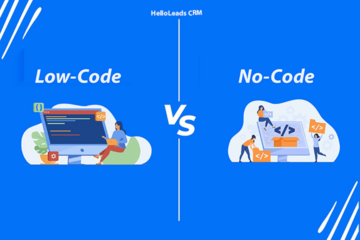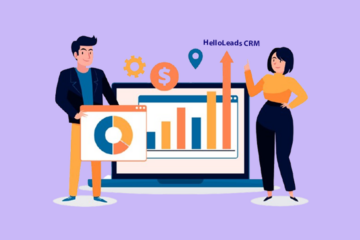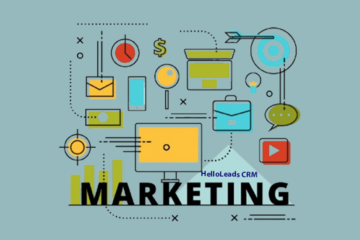
Migrating your data to a new CRM may seem like a daunting task, but it’s a crucial step for better managing your customer relationships and improving your business operations. This process involves transferring all your important customer information from your old system to the new one, and when done correctly, it can make a big difference in how efficiently your business operates.
A smooth migration ensures that your customer data, such as contact details, interaction history, and preferences, is accurately transferred to the new CRM. This prevents the loss of valuable information and ensures everything is set up correctly in your new system. Consequently, you can start using the new CRM’s features right away without missing a beat.
In this guide, we will walk you through the entire migration process, step-by-step. We’ll cover everything from preparing your data and choosing the right CRM to executing the migration and checking that everything works as expected. By following these steps, you’ll be able to make the transition smoothly, ensuring that your new CRM system is up and running with all your data intact. This will help you enhance your customer relationships, streamline your business operations, and ultimately make your work more efficient. So, let’s dive in and start making your CRM migration a success!
Step-by-Step Data Migration Guide
1.Assess Your Current Data
A successful data migration hinges on a thorough understanding of your existing data. To begin with, identify the specific set of data that you need to transfer to your new CRM system. This might include customer information, sales data, marketing data, support records, or financial details. Next, create a comprehensive list to ensure no critical data is overlooked.
Once a specific set of data is identified, it’s crucial to evaluate its quality. Look for inconsistencies, errors, or missing information. Cleansing, validating, and enriching the data will significantly enhance its accuracy and reliability in the new system.

Lastly, determine the format of your data. Common formats include CSV, Excel, databases, or APIs. Understanding the format will help you choose the appropriate migration tools and methods. By taking the time to assess your data, you’ll lay a solid foundation for a smooth and successful migration.
2.Choose the Right CRM
Selecting the ideal CRM system is crucial for your business’s success. Start with comprehensive research based on your unique needs, considering your business size and industry. Filter and narrow down options based on specific requirements to handle your data effectively.
When evaluating different CRM solutions, several key factors come into play. Ensure the pricing structure aligns with your budget and that the available features match your business processes. Scalability is essential for future growth, and user-friendliness is crucial for easy adoption by your team.
Finally, evaluate the CRM’s data import capabilities. Efficiently transferring your existing customer data is crucial for a smooth transition and maximizing the CRM’s value from the outset. By considering pricing, features, scalability, user-friendliness, and data import capabilities, you can select a CRM that empowers your business to achieve its goals.
3.Plan Your Migration
A well-structured migration plan is essential for a smooth transition. Begin by outlining the scope of your migration project, establishing a realistic timeline, and identifying the necessary resources. Clearly define what data will be migrated, which systems will be involved, and the expected outcomes of the project.
Next, assign roles and responsibilities to team members. Determine who will lead the migration, who will handle data mapping, and who will be responsible for testing and user training. Effective communication and collaboration are crucial during this phase.
Developing a comprehensive data mapping strategy is critical. Match fields between your old and new CRM systems to ensure accurate data transfer. Identify any discrepancies or inconsistencies in data formats and develop a plan to address them.
Before initiating the migration process, create a complete backup of your existing data. This safeguard protects your valuable information in case of unexpected issues or errors during the migration. By meticulously planning, you can minimize risks, optimize efficiency, and increase the likelihood of a successful transition.
4.Data Cleaning and Preparation
Clean data is the foundation of a successful CRM implementation. Begin by cleansing your data to eliminate duplicates, inconsistencies, and errors. This crucial step ensures data accuracy and reliability.

Standardizing data formats is equally important. Consistent data formatting across your CRM promotes efficiency and improves data analysis. By establishing clear data standards, you enhance the overall quality of your information.
To optimize your CRM, consider creating custom fields to accommodate specific data points not included in standard fields. Tailoring your CRM to your unique business needs maximizes its value and effectiveness.
5.Data Migration
Data migration involves transferring valuable customer information from your old system to your new CRM. You have two primary options: utilizing the CRM’s built-in import tool or engaging a third-party migration specialist.
Whichever method you choose, closely monitor the migration process. Watch for any potential issues or errors that may arise during data transfer. Once migration is complete, verify the integrity of your data to ensure accurate transfer without loss.
6.Testing and Validation

Once the data migration process is complete, rigorous testing is essential to ensure data integrity and usability within the new CRM system. Thoroughly examine the migrated data for accuracy and completeness. Verify every data point to confirm it has transferred correctly and without errors.
Test the accessibility and usability of the data within the new CRM environment. Ensure all migrated data can be easily accessed and utilized by users as intended. Promptly address any identified issues or discrepancies to maintain data quality.
7.User Training
Effective user training is essential for a successful CRM implementation. Provide comprehensive training sessions covering the new CRM’s features and functionalities, tailored to different roles within your organization to ensure everyone understands how to use the system effectively.
Beyond initial training, offer ongoing support and resources to help users adapt to the new system. This could include creating user manuals, FAQs, or online tutorials. Encourage open communication and provide channels for users to ask questions and seek assistance. By investing in user training, you empower your team to fully utilize the CRM’s capabilities and drive business growth.
Successfully migrating your data to a new CRM requires careful planning and attention to detail. To ensure a smooth transition, start by involving key stakeholders from departments like sales, marketing, and customer support. Their insights will help tailor the CRM to meet everyone’s needs. Prioritize data quality by cleaning up your data—removing duplicates, correcting errors, and standardizing information—to maintain accuracy and integrity in the new system. Conduct thorough testing to identify and fix issues before the CRM goes live, reducing potential disruptions. Effective communication is also crucial; keep your team informed with regular updates to manage expectations and ease the transition. In summary, though data migration to a new CRM is a significant task, it offers substantial benefits. By engaging stakeholders, ensuring data quality, testing thoroughly, and communicating effectively, you can achieve a successful migration, enhance customer relationships, and maximize your CRM investment.
Share this blog :










